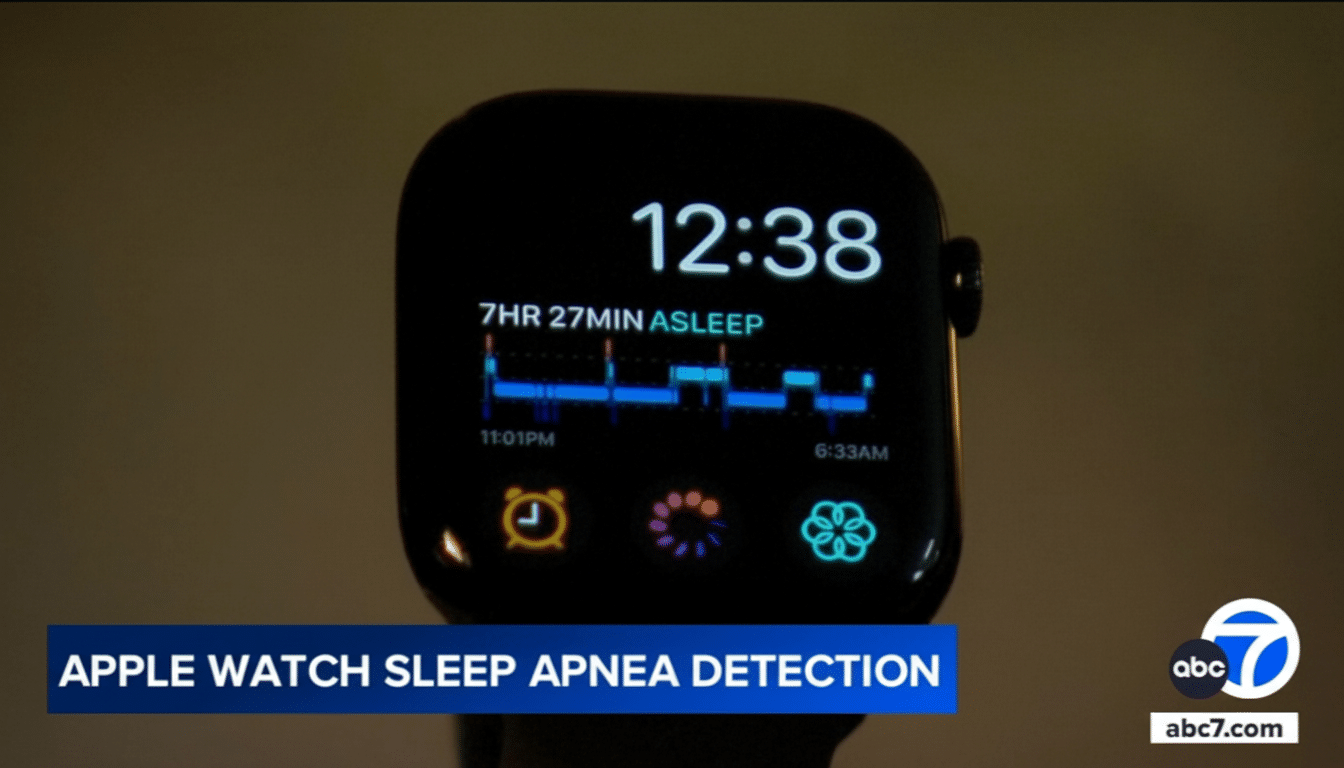Apple has obtained FDA clearance for its Hypertension Detection feature on Apple Watch, a step that advances the company further into the health space.
Not a tool to get immediate blood pressure numbers, it screens for sustained high blood pressure over time — indicating potential hypertension so users can follow up with a clinician.

It is Apple’s third F.D.A.-cleared health capability, joining Sleep Apnea Detection on Apple Watch and Hearing Loss Detection on AirPods. It is worth noting this clearance is from the FDA, not an approval which means the feature was evaluated as being substantially equivalent to an existing device category and its purpose is only to be used in aiding clinical diagnosis and not replace it.
How the new detection really works
The watch uses its optical heart sensor to read the PPG signals — a technology called photoplethysmography that’s able to pick up tiny changes in blood volume with each and every heartbeat. Using this data and your baseline activity context, algorithms then analyze these signals over a period of about 30 days to determine if the trends in blood pressure are more likely to be above or below a hypertension threshold.
You get a classification, not a systolic/diastolic reading at the conclusion of your monitoring window. If the flag indicates your blood pressure might be high, the device pushes you to go see a healthcare provider. The app also allows you to log measurements (those with your traditional blood pressure kit and cuff), including diastolic readings, set reminders for jotting down those numbers and export a PDF summary that can be shared with your doctor. Classifications are based on recommendations from groups like the American Heart Association and the European Society of Cardiology.
Apple says the feature is based on data from over 100,000 study participants. The scale matters: PPG is sensitive to motion, skin perfusion and fit of the sensor so large data set help to train models to minimize the false positives while keep its sensitivity.
Compatibility: does you Apple Watch have it?
Hypertension Detection comes with watchOS 26 and is compatible with Apple Watch Series 9 or later and Apple Watch Ultra 2 or later including the new Series 11 and Ultra 3. The feature is being release to over 150 countries as the software update rolls out.
Not supported: Apple Watch SE (2nd or 3rd Gen), Series 8 and earlier, and the Ultra 1st gen. If you don’t see the feature after updating, verify that your watch model qualifies from a hardware standpoint and region availability has made it to your device.
Why FDA clearance matters:
Entertainment metrics exist, but medical grade features are not.

FDA clearance is a sign that the feature’s intended use, to screen for possible hypertension, has been tested against a regulatory standard. That sets Apple apart in a crowded market including Samsung and Google, where many capabilities are still wellness-only. It also manages consumer expectations: this is a clinical screening tool that encourages action; not unlike a cold preventing you from getting on an airplane, but rather than forcing us all to wear jackets inside and keeping us out of the cockpit (to strain the analogy), it tells you — the user/consumer — to get thee to a health care provider!
Use cases tend to broaden over time for those with regulatory traction. Apple’s portfolio now stretched from cardiovascular and respiratory screening to hearing health — a trajectory that aligns with the company’s stated intention to contribute most in healthcare.
What this means for hypertension screening
Hypertension is frequent, and silent in a lot of cases. World Health Organization data from 2013 estimates that more than 1.2 billion adults worldwide have hypertension, while U.S. data from the Centers for Disease Control and Prevention indicate almost half of American adults meet diagnostic criteria. Early detection is crucial: even small decreases in systolic pressure can greatly reduce the risk of stroke and heart disease.
Wearable screening can detect patterns people don’t experience — elevations that occur at home, not only in a clinic. Even so, professional societies warn that cuffless methods should be used to complement rather than replace validated monitors. The American Heart Association scientific statements stress that treatment should be based on both calibrated cuffs and clinical context. Apple’s design follows that guidance in funneling users to clinicians and providing structured logging of cuff readings.
How to achieve the most accurate results
Wear the watch tightly and constantly (especially during monitoring time). Don’t move too much during measurements, keep the sensor clean and band snug as needed, and consider muting workouts that could confuse readings if you’re seeking solid baseline data.
If you receive a high-risk flag, do home readings on several days with a validated upper-arm cuff at the same times each day, resting and sitting up to take them, and share the watch’s PDF report with your clinician. Medications, caffeine, alcohol, sleep and stress all affect blood pressure — context that your doctor will consider in combination with the wearable data.
Bottom line: if you already have a Series 9 or later or an Ultra 2 or later and upgrade to watchOS 26, you will have one powerful and super useful screening tool on your wrist. Use it as an early-warning system — and let your doctor’s cuff and clinical judgment dictate what comes next.

